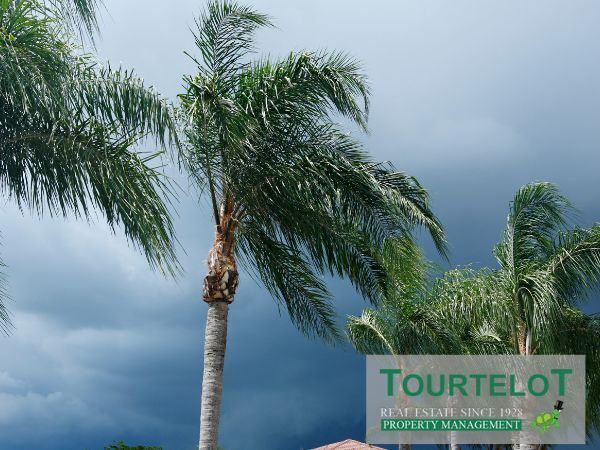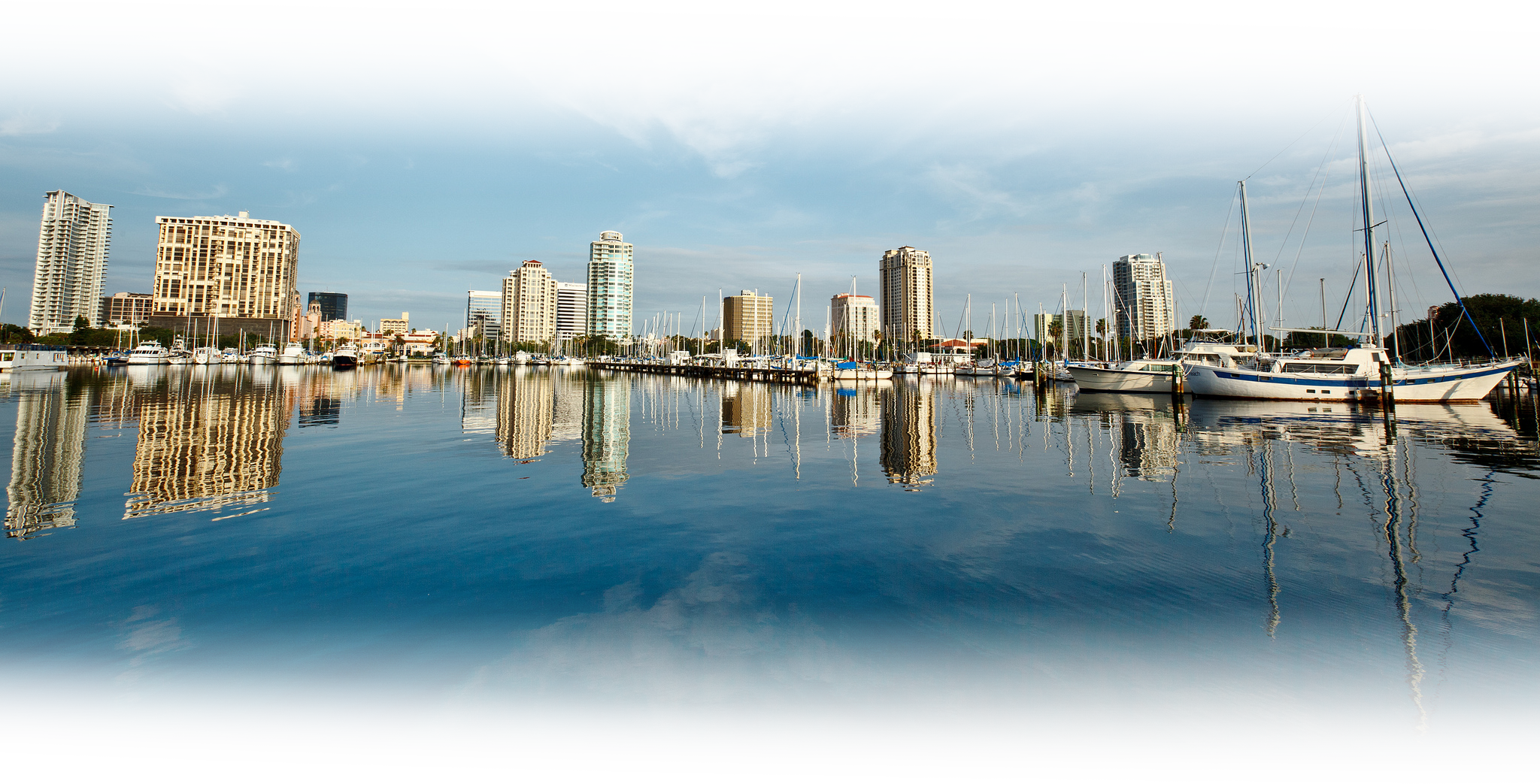
Prepare your properties and tenants for Hurricane Season in St. Pete.
If you’re a landlord in St. Petersburg, Florida, hurricane preparedness is one of your most critical responsibilities. Every year from June through November, the threat of hurricanes in St. Pete brings the risk of severe property damage, power outages, flooding, and the need to protect your tenants’ safety. Knowing how to prepare homes for hurricanes in St. Petersburg, Florida, can limit storm damage, safeguard your investment, and reduce your liability.
Here’s a clear, actionable guide for local landlords on how to get their rental properties and tenants ready, based on local risks, legal requirements, and property management best practices.
Start early: Assess property vulnerabilities before hurricane season in Florida begins.
Maintain open communication with tenants before and after a storm.
Secure windows, doors, and outdoor equipment with hurricane shutters and anchors.
Remove debris, trim trees, and drain water away from the foundation.
Have adequate hurricane and flood insurance, and document everything.
Partner with a reliable property manager in St. Petersburg for stress-free, compliant hurricane preparedness for landlords in St. Pete.
Table of Contents
Introduction
When is Hurricane Season in St. Pete?
Hurricane Preparedness Checklist for St. Pete Landlords
Protecting Your Rental Property from Storm Damage
Communicating with Tenants Before a Storm
Legal Responsibilities of Landlords During Hurricane Season
Emergency Planning & Post-Storm Recovery
Hurricane Insurance Coverage for Rental Properties
Bonus Tips for Multi-Unit Property Owners
When is Hurricane Season in St. Pete?
Hurricane season in St. Petersburg, Florida, runs from June 1 through November 30 each year. This is when Pinellas County, including St. Pete., is at greatest risk for hurricanes, tropical storms, and the flooding, high winds, and power outages they can bring. In recent years, hurricanes like Irma and Idalia have caused extensive property damage in the area, especially in flood-prone zones and older neighborhoods. Landlords must stay prepared every season.
Local Risks Include:
Flash flooding, especially near Tampa Bay and low-lying areas
Wind damage to roofs, windows, siding, and garage doors
Storm surges, which can bring 12 inches or more of water
Extended utility outages and infrastructure disruptions
Hurricane Preparedness Checklist for St. Pete Landlords
Use the following hurricane preparedness checklist to prepare properties for hurricane season and prevent property damage:
Trim Trees and Clear Debris
Remove dead limbs and branches near buildings and power lines.
Schedule regular landscaping maintenance before and during the season.
Inspect and Reinforce Windows, Doors & Roofs
Check for loose or damaged shingles and make necessary repairs.
Inspect window seals and reinforce doors, including garage doors, with braces or anchors.
Secure Outdoor Furniture and Signage
Instruct tenants to bring patio furniture, plant pots, and décor inside.
Remove or secure anything that could become airborne in high winds.
Clean Gutters and Storm Drains
Unclog gutters and downspouts to prevent water backup and flooding.
Ensure storm drains around your property are clear of debris.
Test Sump Pumps and Generators
Check that sump pumps are in good working order for flood-prone properties.
Run generators to verify operation and keep them fueled for power outages.
Regular, proactive property management and maintenance keeps everyone safer.
Protecting Your Rental Property from Storm Damage
St. Petersburg landlords should consider making long-term property upgrades for hurricane preparedness:
Install Hurricane Shutters or Impact-Resistant Glass:
Fit storm shutters or panels on all windows and doors, especially for older properties.
For new renovations, impact-rated windows offer built-in protection.
Use Sandbags and Flood Barriers:
Place sandbags around entryways and garages in flood-risk areas.
Evaluate and install temporary or permanent flood barrier systems if necessary.
Check for Proper Drainage:
Ensure water flows away from the property foundation.
Address low or pooling areas with grading, drains, or landscaping.
Secure AC Units and Exterior Equipment:
Fasten HVAC units, generators, and propane tanks with hurricane straps or anchors.
Elevate or shield equipment located in flood zones.
Being proactive now saves you from major property damage, and reduces costly repairs, later.
Communicating with Tenants Before a Storm
Tenant communication during hurricanes is essential for every property manager in St. Petersburg. Here’s how to keep lines open and responsibilities clear:
Develop a Hurricane Communication Plan:
Set up text, email, or call chains for quick updates.
Let tenants know who to contact in an emergency.
Share Emergency Contacts and Evacuation Routes:
Provide numbers for the property manager, city emergency services, and local shelters.
Share evacuation routes and shelter locations relevant to each property.
Set Expectations for Tenant Actions:
Ask tenants to bring in patio furniture, move cars away from large trees, and secure valuables.
Remind them to keep important documents, medications, and supplies on hand.
Encourage Renters Insurance:
Remind tenants that your property insurance does not cover their belongings.
Strongly recommend or require renters insurance for everyone’s peace of mind.
Clarity before a storm reduces panic and helps everyone react quickly.
Legal Responsibilities of Landlords During Hurricane Season
Understanding landlord responsibilities during hurricane season in St. Pete is vital for compliance and risk management:
Florida Landlord-Tenant Laws: Landlords must maintain rental units in a habitable condition and make timely repairs after a storm.
Liability for Storm Damage: You may be liable for property damage due to neglect (like not fixing a broken roof), but not for acts of nature beyond your control.
Habitability Standards: After a hurricane, landlords must restore essential services (water, power, safe conditions) as quickly as possible.
Document Everything: Take photos or videos of the property before and after a storm. Keep records of all communications and repairs.
Partnering with a professional property management company keeps you compliant and organized.
Emergency Planning & Post-Storm Recovery
Being ready before, during, and after a hurricane is essential for St. Petersburg landlords:
Have Maintenance and Contractor Teams on Standby:
Build relationships with local professionals who can assess and repair damage quickly.
Inspect Properties Promptly:
Check for water leaks, wind damage, and hazards immediately after it’s safe to return.
Communicate with Tenants:
Update them about expected repair timelines, safety, and when the property will be habitable if evacuated.
File Insurance Claims Quickly:
Use photos and documentation to expedite claims for property damage.
Notify tenants of progress and next steps.
Swift recovery actions foster trust and prevent additional property loss.
Hurricane Insurance Coverage for Rental Properties
Adequate insurance is a must-have part of hurricane preparedness:
Homeowners and Landlord Insurance:
Basic policies cover wind and some storm damage, but not flooding.
Flood Insurance:
Properties in St. Pete’s flood-prone zones require a separate flood policy (available through the National Flood Insurance Program).
What’s Covered (and Not):
Water damage from rising, outside water requires flood coverage.
Review your policy for specifics on wind, water, and power outage claims.
Consult an Expert:
Confirm your deductible and any policy exclusions with your insurance agent.
Being properly insured helps speed recovery and protects your investment.
Bonus Tips for Multi-Unit Property Owners
Managing multi-unit buildings during hurricane season in St. Petersburg brings extra considerations:
Designate a Hurricane Safety Leader:
Choose a tenant or onsite manager as point-of-contact for each building.
Provide Storm Survival Kits:
Stock common areas with water, flashlights, batteries, and basic supplies.
Post Emergency Instructions:
Put evacuation plans, emergency contacts, and shelter info in visible places.
Small steps add up to improved tenant safety and confidence!
FAQs
What should landlords in St. Pete do before hurricane season?
Landlords should inspect and repair roofs, windows, and gutters; trim trees; clear debris; secure outdoor items; test emergency generators/pumps; update tenant contact lists; and review insurance coverage.
Who is responsible for storm damage to a rental property in Florida?
Landlords are typically responsible for structural repairs and restoring habitability. Tenants are responsible for insuring their own belongings.
Do landlords need hurricane insurance in St. Petersburg?
While not legally required, hurricane and flood insurance are highly recommended for rental property owners in risk areas to cover property damage and facilitate recovery.
How can landlords protect tenants during a hurricane?
Provide clear safety instructions, emergency contacts, evacuation routes, and maintain open communication. Encourage or require renters' insurance for tenant belongings.
What are landlord's legal responsibilities during hurricane season in Florida?
Landlords must maintain habitable conditions, make timely repairs after disasters, and comply with all local and state emergency laws.
Contact Tourtelot Property Management for Property Management Services in St. Petersburg
Proactive hurricane preparedness protects your properties and your tenants. Start early, stay informed with local authorities (like the National Hurricane Center), communicate clearly, and make use of a comprehensive hurricane preparedness checklist to minimize hurricane damage and recovery costs.
For landlords in St. Petersburg, integrating these steps into your yearly property management routine is vital for safeguarding your investment and your tenants’ safety.






